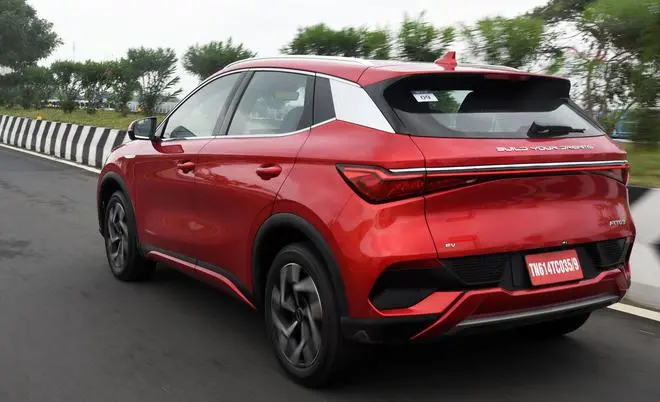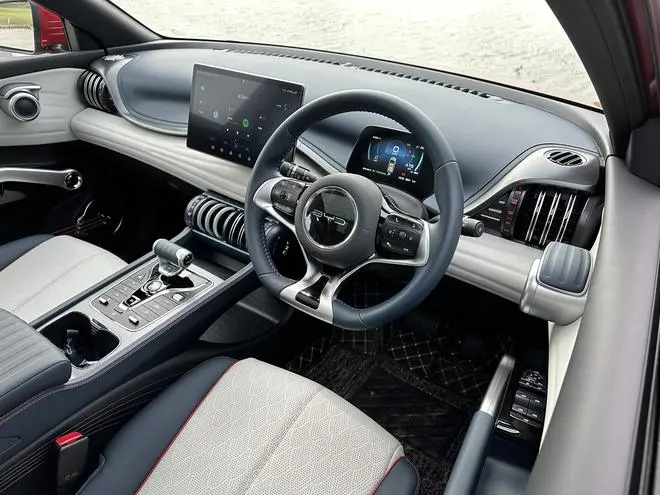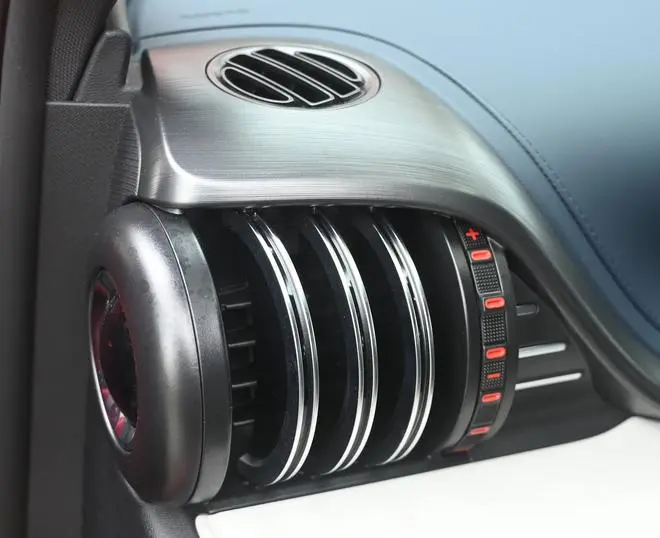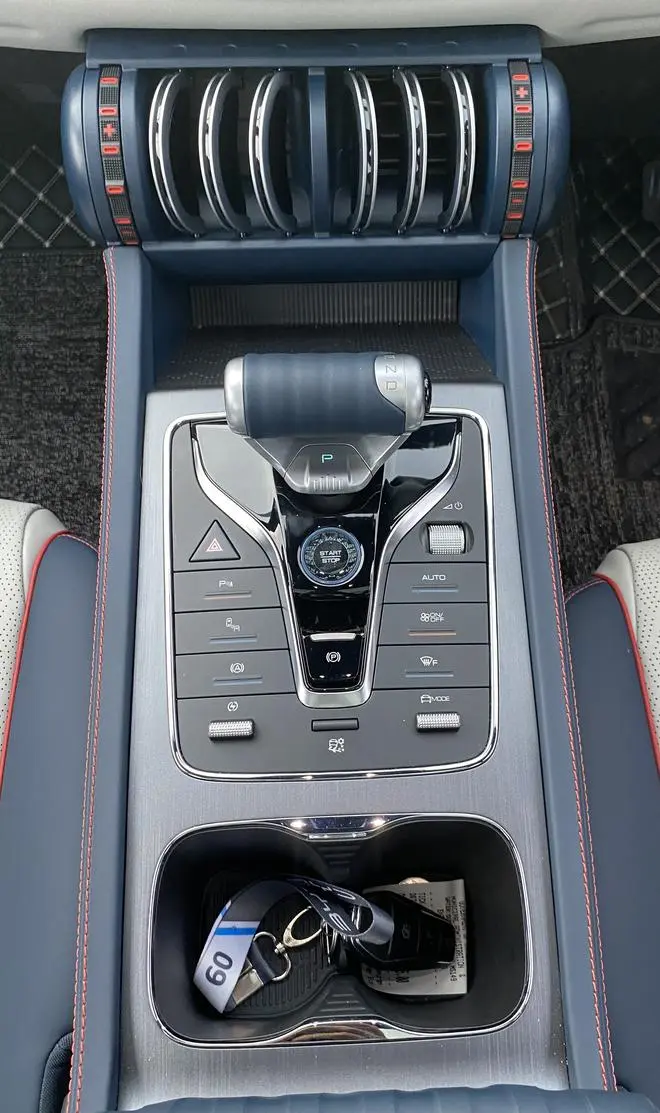A few electric vehicle companies with moderate volume ambitions are doing better than traditional ICE (internal combustion engine) vehicle makers who are attempting to go electric and are expecting to quickly match deliveries of their EVs and their fossil fuel models. A good example of the former is Chinese EV brand BYD, which has successfully broken into the Indian market with its e6 multipurpose vehicle (MPV) and is now set to re-establish its electric ambitions with the new Atto 3 compact SUV.
This is the second model from the brand, which has been present in the Indian market for nearly a decade and a half as a supplier of components and batteries. BYD is also one of the world’s biggest manufacturers of lithium batteries. After targeting the institutional and then the individual buyer segments for its electric MPV, the e6, BYD will now focus on young, family-oriented buyers. And its brand promise will continue to be practicality, almost-ICE vehicle like driving range, and high reliability with its blade battery technology. BYD will continue to be a small player in the EV space, with a planned sales volume of just 1,500 units for 2023, by which time the company will have about 24 sales and service outlets. The Atto 3 and the e6 are expected to have an 80:20 split in the target sales volume for 2023.

The Atto 3 will be available in 4 colours, red and the signature communication blue, in addition to white and silver | Photo Credit: BIJOY GHOSH
Design
The new Atto 3 is a 4.5-metre-long e-SUV which seems like an overgrown hatch from one angle and like a modern crossover that can hold its own from another. It is just a shade larger than some of the e-SUVs already on the market, though its sleek profile makes it seem smaller than its footprint. It has a decent, wide on-road stance, with the wheels pushed out to the extremes, a steeply raked A-pillar, and a curvy roofline. There are mild design references to the e6 in the thick chrome garnish that connects the two headlamps and the thin LED light strip and chrome band that connect the two taillamps. The front fender features what looks like, a slender airdam and large air vents on either side, lending the Atto 3 a sporty fascia. The side profile is most crossover-like, with its gradually rising belt line and shoulder line. The thick C-pillar gets a textured chrome panel, and there are multiple brand badges around the vehicle, including the full form “Build Your Dreams” in chrome lettering running across the tailgate. The Atto 3 will be available in four colours, including the red that you see in these pictures and the signature communication blue, in addition to white and silver.

The cabin of the e-SUV, on the other hand, is offbeat and quirky | Photo Credit: BIJOY GHOSH
Cabin
While the exterior of the Atto 3 is unique and appealing, though relatively conventional, the cabin of the e-SUV, on the other hand, is offbeat and quirky. Yet, while individual elements like the small speaker housing on the door panel that also doubles up as the doorknob and the flappy aircon vent fins are bordering on overkill, surprisingly they all come together to make up a cabin that still feels trendy and even has a perceived premiumness to it. BYD says that it has chosen a “gym” and “music” theme for the cabin elements, and so the treadmill-style armrest, the dumbbell-like aircon vents, and the “muscle stream” style mid-dash console. Some of the other theme elements include the guitar string-like elastic bottle holders on the door panels and the wavy pattern for the faux stitched panel on the top of the dashboard. A few of these cabin design features do seem a bit artless, and there are a few parts that seem a bit lower in build quality, but the general impression I get is still quite positive.

The dumbbell-like aircon vents goes well with the “gym” and “music” theme of the cabin | Photo Credit: BIJOY GHOSH
The cabin is roomy for a vehicle with a wheelbase of 2.7 metres. It is also well-lit, with the large panoramic sunroof bringing in a lot of the exterior. There is ambient lighting to make the cabin feel special, and some of these, for example, the ones surrounding the speakers, light up in tune with the songs on the music system. The seats are wide, well-bolstered, and comfy, with integrated headrests. The boot offers about 440 litres of space for luggage with all seats in use and about 1,340 litres when the rear seats are folded. The 12.8-inch infotainment screen is mounted on and floats atop a motorised unit, so the menu options can be viewed in both portrait and landscape mode. It is quite novel to see the screen flip at the touch of a button. There is an 8-speaker music system on offer. The Atto 3 also gets the usual suite of infotainment functions, as also the battery ecosystem info in real-time. It also displays a very cool holographic, 360-degree-generated view of the vehicle and its surroundings during reverse parking or in tight traffic conditions, enabling precise corrections at the wheel.
Performance

The Atto 3 feels quite nimble, with quick acceleration in Sport mode, and a fair bit similar performance in Normal mode | Photo Credit: BIJOY GHOSH
The BYD Atto 3 gets the same blade Lithium-ion battery tech that the e6 first popularised. This is a battery type that BYD is confident about and claims that multiple safety tests have returned positive, including the famous nail test. The 60.5 kWh battery is mounted under the floor of the e-SUV, and the cells have a prismatic form factor. The battery chemistry is LFP, or lithium ferrophosphate. The Atto 3’s permanent magnet synchronous electric motor delivers a peak power of about 200 hp and a peak torque of 310 nm. That output puts a lot of ICE vehicles in this size class in the shade, especially considering all that torque is available from a standstill. BYD also claims that this 1,750 kg (kerb weight) e-SUV can sprint to 100 kmph in 7.3 seconds. As far as the more important metric of driving range, the battery is said to be capable of powering the Atto 3 to 521 km (ARAI rating) or 480 km (NEDC). During the drive, my test mule’s instrument panel displayed a range of 480 km with a charge of 99 per cent at the start and about 75 per cent charge and 360 km of range still available when I returned the vehicle. I had tried all three driving modes—Eco, Normal, and Sport—and there was a fair bit of driving on the highway, city roads, and even some idling with the aircon in use.
BYD says that the battery can be charged using a DC charger (max 80 kW), and you’ll get a 0 to 80 per cent charge in about 50 minutes. Via a wall socket, the battery will need about 10 hours for a full charge. The difference between the e6 and the Atto 3 is the new e-platform 3 that is used in the latter. This is a pure electric platform that integrates most of the components, including the motor, controller, DC converter, the battery management system parts, the onboard charger, etc. The integrated electric powertrain offers much higher efficiency levels and apparently also delivers a wider operating temperature range from -30 to +60 degrees centigrade.
The Atto 3 feels quite nimble, with quick acceleration in Sport mode, and a fair bit similar performance in Normal mode too. And in both of these modes, the regen-braking level is also not too abrupt. However, in Eco mode, the response is a bit muted, and heavier throttle inputs are needed to prod the Atto 3 forward with any sense of urgency. But the vehicle feels quite planted and stable at city speeds, and there is a sense of surefootedness that probably comes from a combination of aerodynamics (the CD value is 0.29), suspension tuning, and a lower centre of gravity (the floor-mounted battery). But at highway speeds and into turns, it does feel a bit rear-heavy. On the straights, the Atto 3 feels at ease and offers a composed ride. The ride is also pretty sorted, with a suspension setting that is a good balance between firm and comfy. Going over bad roads, even during mid-acceleration, doesn’t feel harsh or too bouncy either. With a ground clearance of 175 mm, the Atto 3 can tackle big speedbreakers and even some amount of off-road style terrain. The steering feel is quite direct and connected. Braking is also good, with discs on all four wheels and regen braking aiding the performance in traffic.
Bottom Line
The BYD Atto 3 is being offered in only one fully loaded trim variant. The vehicle features Level 2 autonomous driving tech and includes features like adaptive cruise control, lane keeping assist, auto emergency braking, blind spot monitoring, and adaptive headlamps. For safety, it is also offered with seven airbags.
The Atto 3 has been priced at ₹34 lakh (ex-showroom), and BYD says it has already received over 1,500 bookings. With its feature list and equipment levels, the Atto 3 is probably the most attractive compact e-SUV in the sub-₹50 lakh category. The company is also offering long-duration warranties for the vehicle and battery electric system to woo customers away from the ICE ecosystem.




Comments
Comments have to be in English, and in full sentences. They cannot be abusive or personal. Please abide by our community guidelines for posting your comments.
We have migrated to a new commenting platform. If you are already a registered user of TheHindu Businessline and logged in, you may continue to engage with our articles. If you do not have an account please register and login to post comments. Users can access their older comments by logging into their accounts on Vuukle.